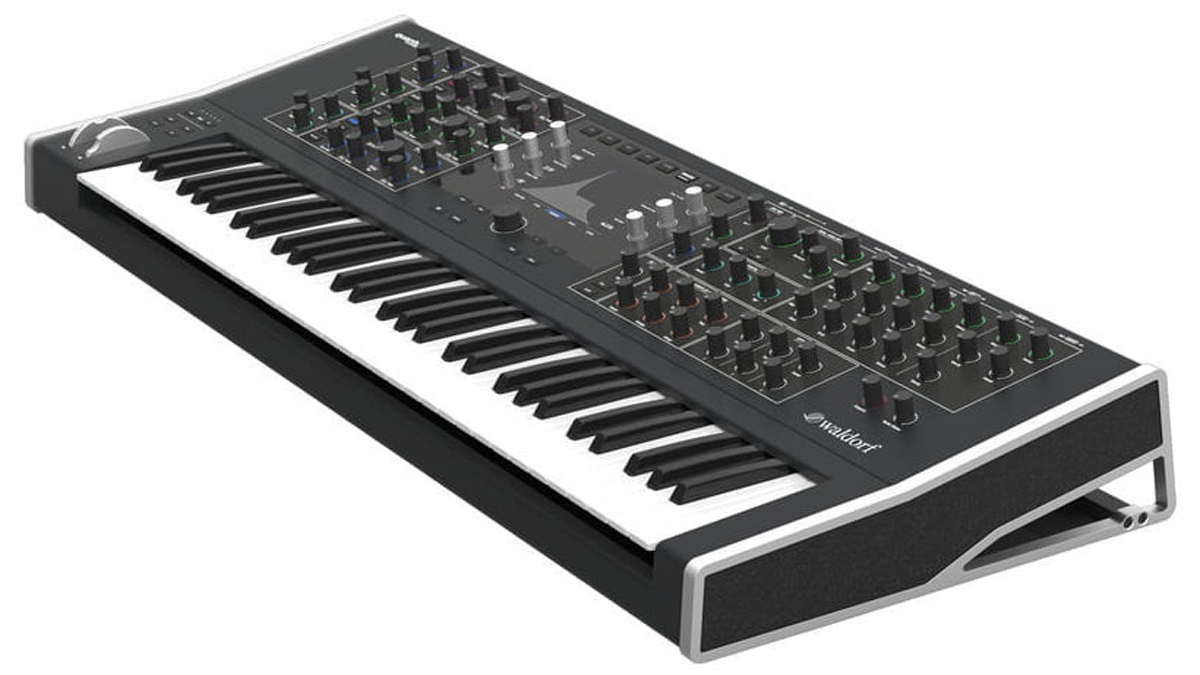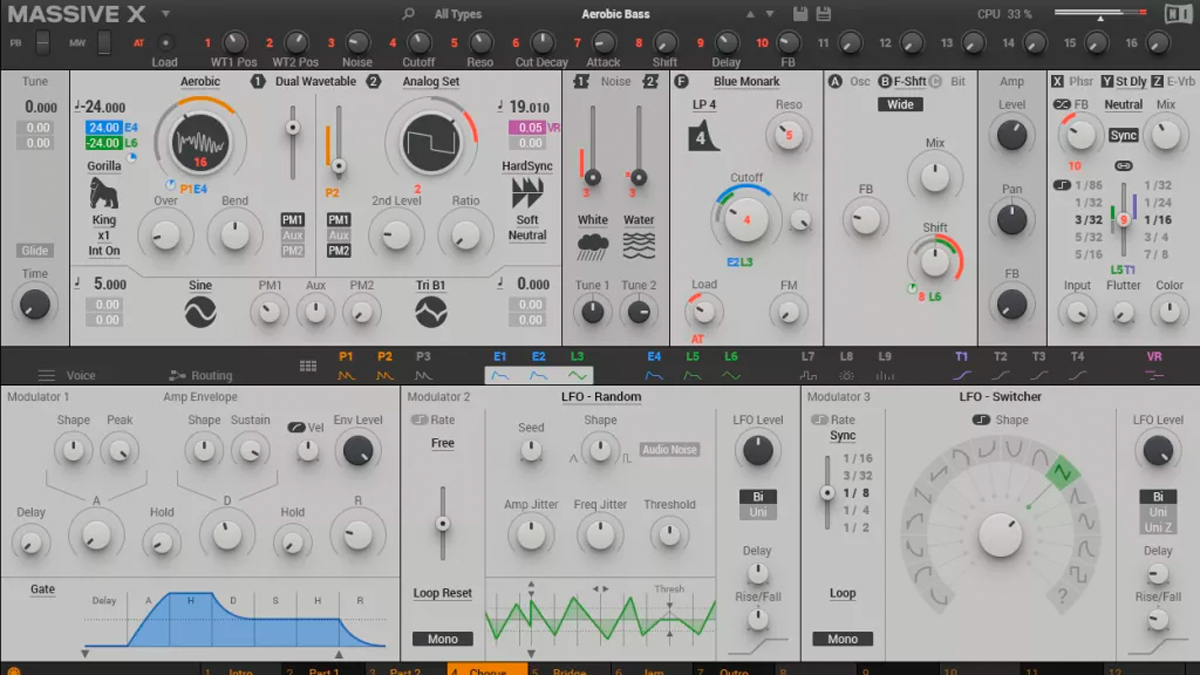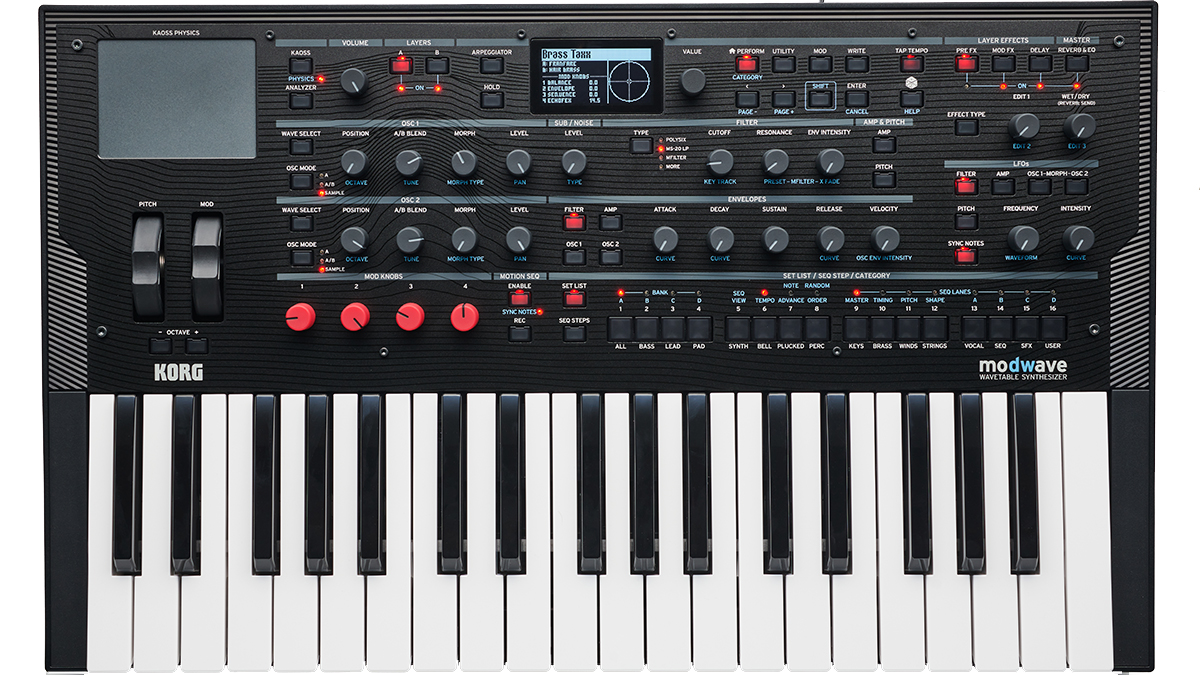What is wavetable synthesis?
Next up in our ultimate beginner's guide to synthesis, we surf straight into wavetable synthesis

Wavetable synthesis is nothing new; it first appeared in the hardware realm in the early ’80s with the launch of Wolfgang Palm’s PPG Wave, later followed by a string of influential hardware synths created by PPG successors Waldorf. It has really come to the fore in the 21st century though, becoming almost the de facto synthesis method for modern plugins.
Native Instruments’ 2007 Massive is the synth responsible for the modern wavetable boom. Its powerful, versatile sound and copious modulation options defined the growling, frequency-filling sound of modern DnB and American EDM.
Its popularity has inspired no shortage of evolutions, the most notable being Xfer Records’ Serum, but wavetable oscillators are also a key part of Arturia Pigments, Kilohearts Phase Plant, Bitwig’s Polymer, Ableton Wavetable and KV331 SynthMaster, to name a few. In hardware you get ASM’s fantastic Hydrasynth, Modal’s Argon8 and Waldorf’s Quantum.
Wavetable synths are essentially a form of sample-based synthesis, using a recorded sound as the primary source for each oscillator. What makes wavetables different from a straightforward sampler is the ability to morph or evolve that sampled sound.
This is possible because wavetables aren’t just a single static sample, but actually a stack of individual waveforms called ‘subtables’ or, more commonly, ‘frames’. Wavetables can contain up to 256 of these frames, and a wavetable synth will always offer some method for the user to move through these, often in the form of LFO or envelope modulation or a manual ‘morph’ control.

Without movement or modulation, a wavetable synth is effectively no different than a sample-based synth that reads a static waveform. However, the stacked frames of a wavetable allow it to transform from one wave shape to another as you play.
In analogue terms, that could mean having an oscillator that morphs from a saw wave at one end of a wavetable to a square at the other. In creative terms it lets users incorporate textural elements such as rain or static noise, or capture the inconsistencies that come from an acoustic instrument.
Want all the hottest music and gear news, reviews, deals, features and more, direct to your inbox? Sign up here.
The key differences between wavetable synths lies in the methods used to play back and modulate the wavetables themselves. Massive successor, Massive X, for example, features ten different playback modes that each read, filter and modulate the wavetable differently.
Beyond the oscillators, wavetable synths tend to adhere to classic subtractive synth structure, using filters, an envelope-controlled amp and onboard effects. Due to the emphasis on movement though, wavetable synths tend to come with modulation options, certainly including LFOs and envelopes, often joined by more complex sequencers and modulation generators.
When to use it
Wavetable engine popularity in the plugin realm is due to their versatility. As with a sampler, you can effectively make a wavetable oscillator sound however you want. Unlike standard samplers though, wavetables can sound more natural or varied as you’re not simply playing the same recorded sound each time you trigger a note.
They’re great for pads and atmospheric patches, adding interest to longer, droning sound. Wavetables are great for replicating both vintage synths and acoustic instruments too; they can replicate the natural variety inherent in both analogue oscillators and real instruments.
Three great wavetable synths
ASM Hydrasynth

There are many great hardware wavetable synths hitting the market, but Hydrasynth is one of the most interesting. Rather than giving preset wavetables, it allows the creation of custom morphing tables selected from a list of 200+ single cycle waves: very fun to use.
NI Massive X

Massive X remains somewhat divisive among fans of the original, but its multitude of unique playback modes and semi-modular routing push wavetable synthesis forward in new ways. Undeniably characterful, even if that does mean it lacks the intuitiveness of the original.
Korg Modwave

The Korg’s wavetable oscs have 30 plus modifiers, 13 types of morphing process, plus the ability to blend between two independent wavetables. One of the most comprehensive hardware wavetable powerhouses going.


Future Music is the number one magazine for today's producers. Packed with technique and technology we'll help you make great new music. All-access artist interviews, in-depth gear reviews, essential production tutorials and much more. Every marvellous monthly edition features reliable reviews of the latest and greatest hardware and software technology and techniques, unparalleled advice, in-depth interviews, sensational free samples and so much more to improve the experience and outcome of your music-making.
